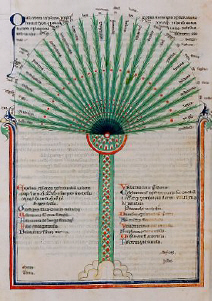A teoria neoplatônica do veículo okhema-pneuma é baseada nos escritos de Platão e suportada por aqueles de Aristóteles. O veículo pretende unir duas entidades diametralmente opostas: a alma incorpórea e o corpo corpóreo.
E a solidariedade do tema astral do pneuma-ὅχημα neoplatônico com o psicológico do espírito fantástico está ainda muito viva em Dante, ao escrever, no Convívio, que “este espírito vem pelos raios da estrela”. (Convivio, II 6.9) (AgambenE:175)
(->article5369)
The soul needs some kind of physical housing, according to the Neoplatonists. The human body is compared by Plato Phaedrus 250C6 to an oyster, perhaps to an oyster housing a pearl (the soul), rather than to a shell housing an oyster. But the soul has other physical vehicles for the Neoplatonists besides the oyster-like one. There is a pneumatic vehicle, which on some views might eventually be shed, and on some views (Proclus in Tim. 3.236,31ff.; 298,12ff.; ET 196; 207-9; PT 3.5; Philoponus in DA 18,26-31), the still finer luminous (augoeides) vehicle, which is everlasting. The idea of a vehicle (okhema) comes from Plato Phaedrus 247B, where the gods circle the heavens in vehicles, from Phaedo 113D, where the souls of the dead are taken in vehicles to Acheron, and from Timaeus 41D-E, where the divine ‘Craftsman’ implants the newly-made rational souls of humans into the stars as vehicles, to which they eventually may return (a belief also found in India) before instructing them on their future incarnation. (For the role of shooting stars. For different views on the variable durability of vehicles, Proclus in Tim. 3.234,8-238,23. (SorabjiPC1:221)
LÉXICO:
